Orange Pekoe Tea
Orange pekoe tea has a rich history deeply intertwined with significant tea-growing regions and precise cultivation practices.
Geographical Roots
Orange pekoe tea primarily originates from the lush, hilly regions of Sri Lanka, India, and China. Sri Lanka's central highlands, renowned for producing high-quality tea, are a major contributor. Indian regions like Assam and Darjeeling also play a crucial role in its production. The tea's unique characteristics are influenced by the specific climatic conditions and altitudes of these areas, making each region's tea distinct.
Cultivation Timeline
The cultivation of orange pekoe tea began in the 19th century, following the British colonization of India and Sri Lanka. Early plantations were established by the British to meet the rising demand in Europe. Over time, the cultivation techniques were refined, and the focus on quality became paramount. Today, tea bushes are carefully pruned, and leaves are hand-picked to ensure the highest quality orange pekoe tea.
Bestsellers
Botanical Characteristics

Orange Pekoe tea comes from the plant Camellia sinensis.
The leaves are typically harvested from the tips of the stems, ensuring a high quality.
Plant Anatomy
- Leaves: Broad and leathery with a glossy surface.
- Flowers: White with yellow stamens, usually small and fragrant.
- Stem: Woody and branching.
Growing Conditions
This plant thrives in tropical and subtropical climates.
Adequate rainfall and well-drained soil are crucial.
Harvesting
Leaves should be handpicked to maintain quality.
Focus on the youngest and most tender leaves for Orange Pekoe tea.
Caffeine Content
Orange Pekoe tea contains moderate caffeine levels.
This varies depending on the specific growing and processing methods used.
Processing and Production

Orange pekoe tea undergoes intricate steps from plucking to grading, each crucial for its quality and flavor. These stages ensure that the tea remains premium and consistent.
Plucking and Sorting
The process begins with plucking the top two leaves and a bud from tea plants. These young and tender leaves ensure a superior flavor profile. Workers carefully hand-pick these parts to maintain the integrity of the leaves.
Lao Ban Zhang
After plucking, leaves are sorted. Sorting removes stems, coarse leaves, and other unwanted parts. Proper sorting is vital because it impacts the tea's final quality and taste. Clean, uniformly sized leaves are ideal for further processing stages.
Withering Process
Withering reduces the moisture content, making leaves pliable for rolling. Freshly harvested leaves are spread out on racks in well-ventilated areas. Air circulates naturally or through fans to achieve optimal withering conditions.
The duration of withering can range from 12 to 18 hours. This time frame helps in developing the desirable chemical changes necessary for the tea's flavor. Withering is complete when the leaves lose around 30% of their moisture.
Rolling Techniques
Once withered, the leaves are rolled to break their cell walls and release essential oils. Rolling can be done by hand or with mechanical rollers. This step shapes the leaves and enhances flavor by starting the oxidation process.
Rolling is critical because it influences visual appeal and taste. The rolled leaves have a twisted appearance, which is a key characteristic of high-quality orange pekoe tea.
Oxidation and Firing
Oxidation involves leaving the rolled leaves to react with oxygen. This step darkens the leaves and enriches the flavor and aroma. The duration of oxidation is closely monitored to avoid over-oxidation, which can ruin the tea.
After oxidation, the leaves are fired or dried, stopping the oxidation process. Firing is done in large ovens or drying machines. This process locks in the flavors and gives the leaves a stable, shelf-ready form.
Grading Standards
Grading sorts the final product based on leaf size and appearance. Orange pekoe tea is categorized into different grades like OP (Orange Pekoe), FOP (Flowery Orange Pekoe), and BOP (Broken Orange Pekoe).
Higher grades contain whole leaves and fewer fragments, signifying quality. Grading helps consumers understand the tea's quality. Consistent grading reinforces the brand’s reputation for premium tea.
Flavor Profile
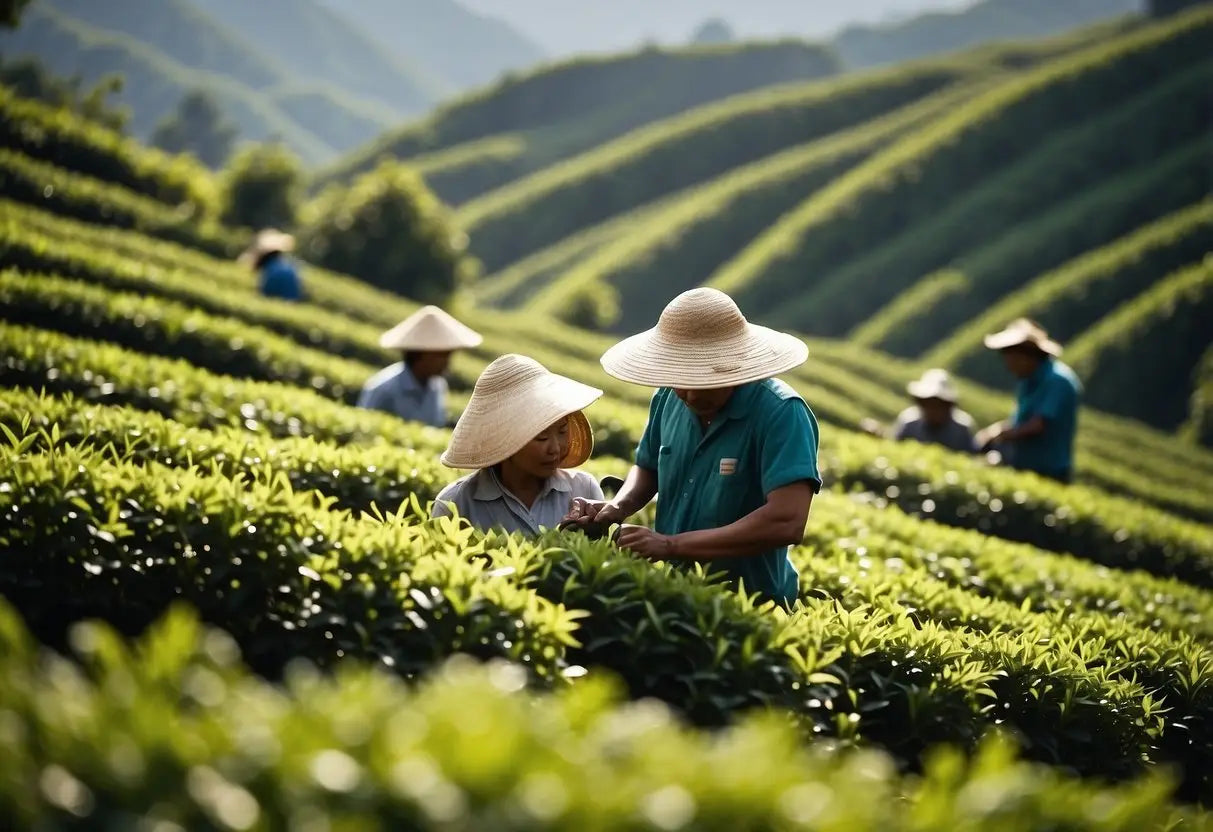
Orange Pekoe tea offers a unique taste experience. The flavor profile is often described as robust and complex. You might notice a bold astringency which can provide a slightly drying sensation on your palate.
Key Notes
- Boldness: The infusion typically delivers a strong, pronounced taste.
- Astringency: Expect a slight tang that may leave a dry mouthfeel.
Taste Elements
- Malty undertones: You may detect subtle hints of malt.
- Floral notes: Some varieties exhibit delicate floral aromas.
- Citrus hints: Occasionally, a citrusy zest can emerge.
Drinking Orange Pekoe tea hot enhances the warmth and richness of its flavors. Try it without milk or sugar to appreciate its natural taste. If you prefer, adding a splash of milk can mellow the sharpness while maintaining its bold character.
Aroma
The aroma complements the taste with earthy and woody scents. These aromatic qualities can add to the overall drinking experience, making each sip inviting and satisfying. You might find yourself revisiting these fragrances with every sip.
Health Benefits
Orange pekoe tea offers numerous health benefits due to its rich composition of antioxidants.
Antioxidants:
- Helps combat free radicals.
- May reduce the risk of chronic diseases.
Heart Health:
- Can help lower cholesterol levels.
- Supports healthy blood pressure.
Weight Management:
- Contains compounds that might assist in fat oxidation.
- Low in calories, making it a weight-friendly beverage.
Digestive Health:
- May aid in digestion.
- Can soothe stomach discomfort.
Mental Alertness:
- Contains caffeine, which can improve focus and alertness.
- L-theanine content promotes a calm state of mind.
Nutrient Table
| Nutrient | Benefit |
|---|---|
| Antioxidants | Reduces oxidative stress |
| Caffeine | Enhances mental alertness |
| L-theanine | Promotes relaxation without drowsiness |
| Polyphenols | Supports overall health |
By incorporating orange pekoe tea into your daily routine, you can enjoy these potential health benefits while savoring its rich flavor.
Brewing Methods
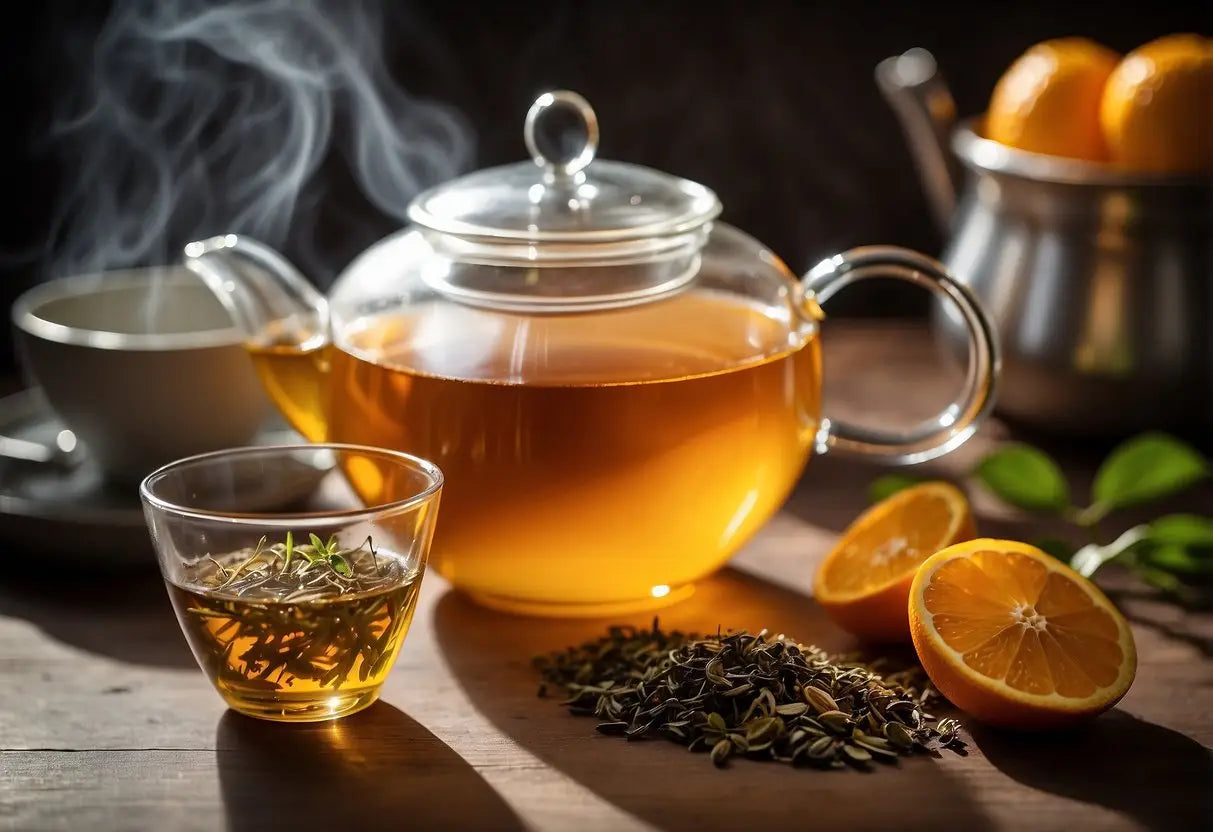
To brew a perfect cup of Orange Pekoe tea, start by using fresh, cold water. Boil the water to a temperature of around 200°F (93°C).
Use 1 teaspoon of tea leaves for every 8 ounces of water. Place the leaves in a teapot or infuser.
Pour the hot water over the tea leaves. Let the tea steep for 3-5 minutes, depending on your taste preference.
If you prefer stronger tea, use more leaves rather than increasing steeping time. Over-steeping can lead to bitterness.
For iced Orange Pekoe, brew a stronger tea by using more leaves or longer steeping, then cool and pour over ice.
Adjust brewing times and water temperatures to match your taste. Enjoy experimenting to find your perfect cup.
Cultural Significance
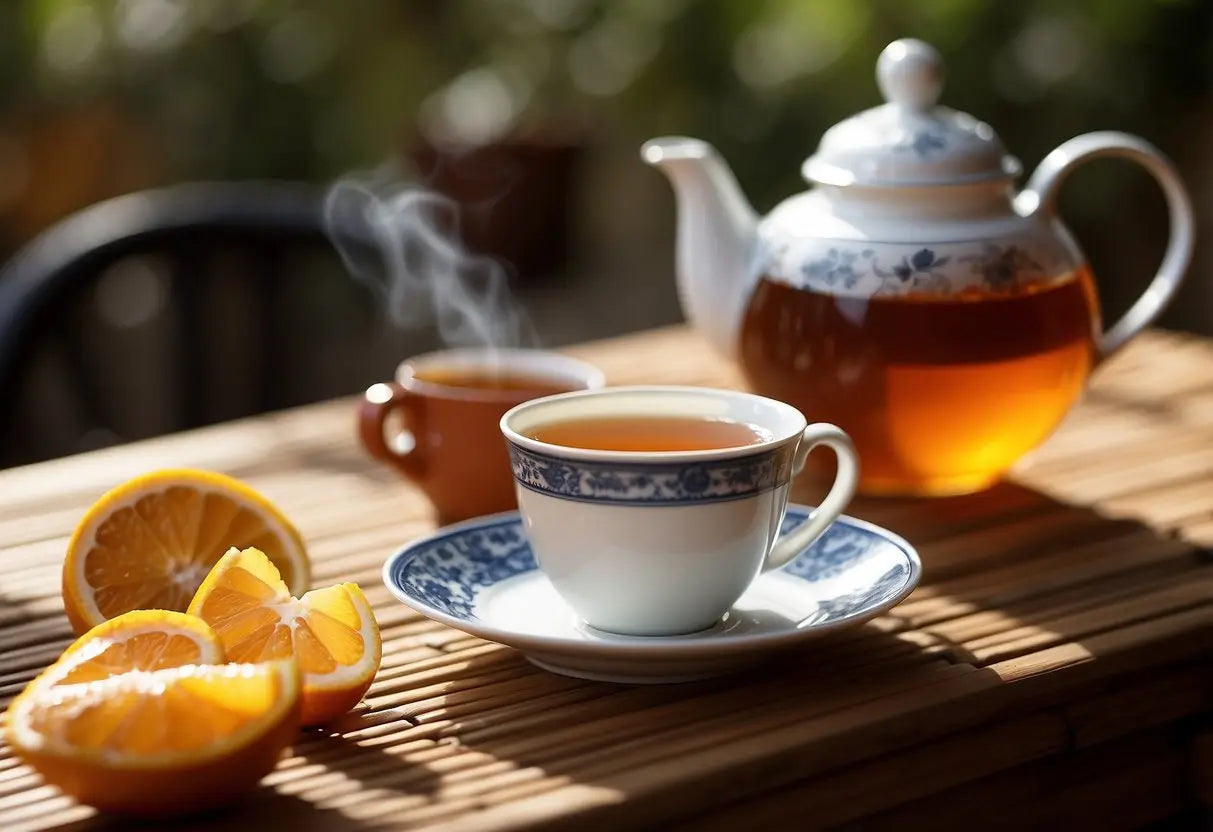
Orange Pekoe tea has a deep-rooted cultural significance that spans across various regions. It holds a special place in both daily consumption and ceremonial practices.
Global Consumption
You will find that Orange Pekoe tea is enjoyed globally. In countries like India and Sri Lanka, it is a staple beverage. The British have incorporated it into their renowned afternoon tea tradition, making it an essential part of their daily routine.
In the United States, Orange Pekoe tea is a common variety found in supermarkets, indicating its widespread acceptance. Japan and China also include it in their tea assortments, though it often blends with local flavors. Key countries in Latin America also embrace Orange Pekoe for its rich, aromatic profile.
Ceremonial Uses
Ceremonially, Orange Pekoe tea has a significant place in various cultural rituals. In Japan, tea ceremonies sometimes feature this tea type, blending Eastern precision with Western flavors. Indian households often use it during festivals and special occasions.
In Buddhist practices in Sri Lanka, Orange Pekoe tea serves as an offering to the monks, signifying respect and tradition. In the Middle East, it's common to serve this tea to guests as a gesture of hospitality.
Storage and Preservation
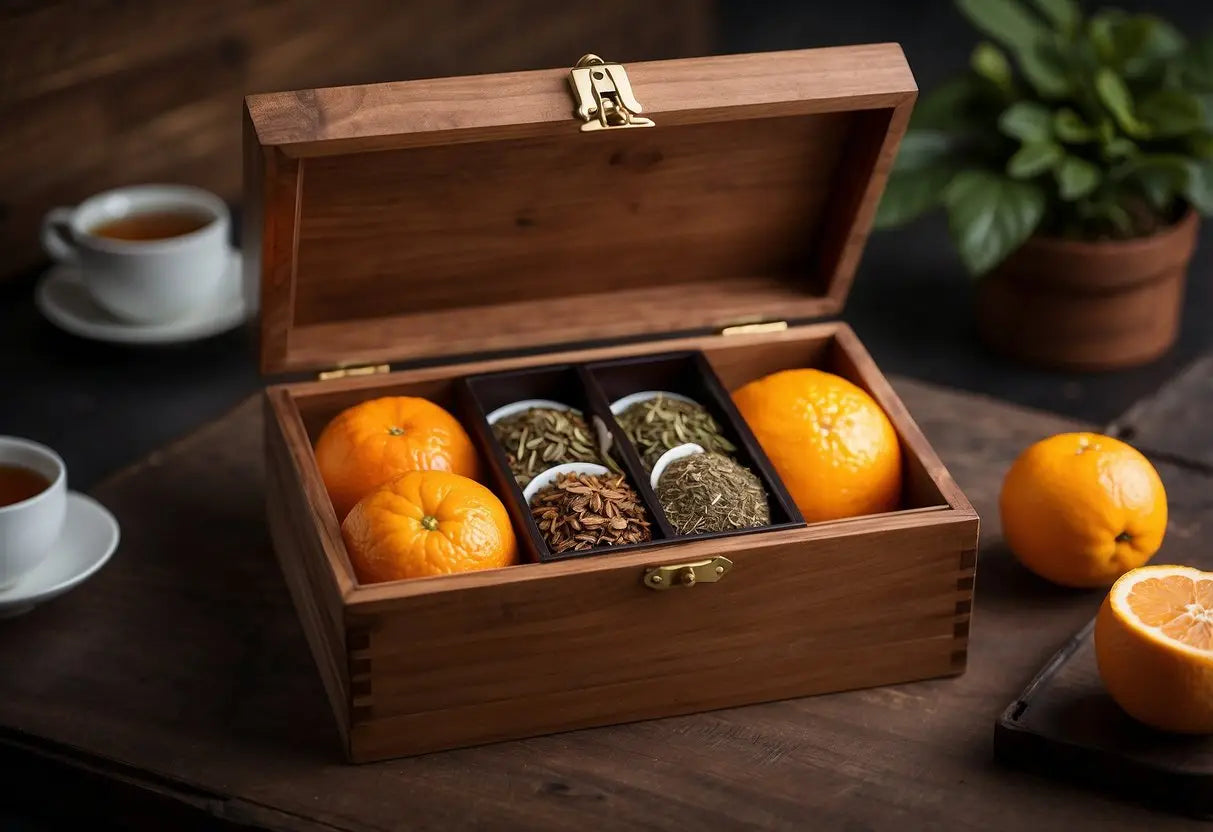
To maintain the flavor and quality of your orange pekoe tea, proper storage is essential.
Keep It Sealed
Store your tea in an airtight container to prevent exposure to air, which can cause the tea to lose its aroma and potency.
Use Opaque Containers
Light can degrade the quality of tea, so it's best to use opaque or dark-tinted containers.
Avoid Heat and Moisture
Keep your tea in a cool, dry place. Excessive heat and moisture can lead to the growth of mold and spoil the tea.
Stay Away from Strong Odors
Tea can absorb odors from its surroundings. Store it away from spices, coffee, and other strong-smelling substances.
Label Your Storage Containers
For convenience, label your containers with the type of tea and purchase date. This helps keep track of freshness.
Recommended Storage Times
| Type | Recommended Storage Time |
|---|---|
| Loose Leaf | 6-12 months |
| Tea Bags | 12-24 months |
By following these guidelines, you can enjoy the full flavor of your orange pekoe tea each time you brew a cup.
Pairing and Cuisine
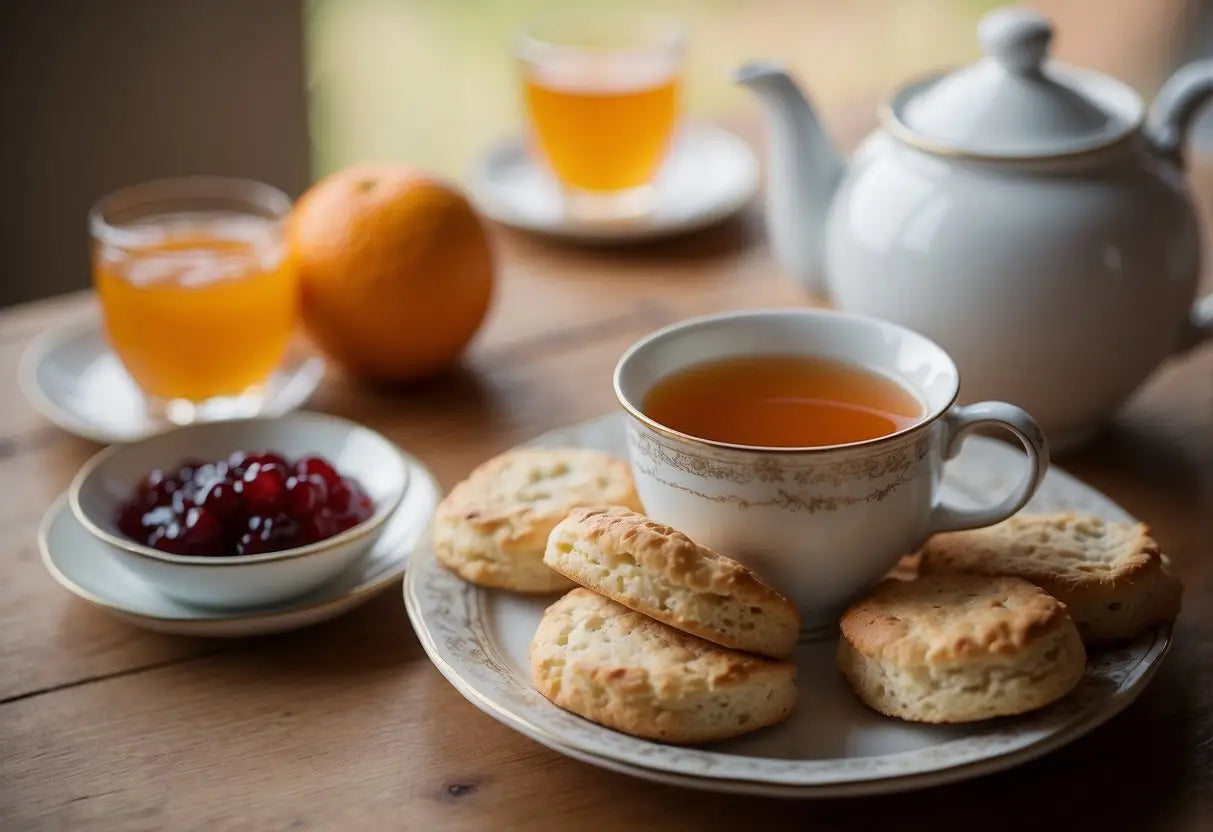
Orange Pekoe tea is versatile in culinary pairings. Its moderate astringency makes it suitable for both savory and sweet dishes.
Savory Pairings
- Cheese boards: Complements mild cheeses like Brie and Edam.
- Herb-roasted chicken: Enhances herbal notes.
- Grilled fish: Melds well with the delicate flavors.
Sweet Pairings
- Shortbread cookies: Balances the buttery sweetness.
- Citrus tarts: Accentuates the tartness.
- Chocolate: Pairs well with both milk and dark varieties.
Breakfasts and Brunches
Traditional breakfasts such as English breakfast or brunch items like quiche can be complemented by Orange Pekoe tea.
Tip: For an enhanced experience, try using Orange Pekoe tea as a base for iced tea blends, adding fresh mint or lemon.
Varieties and Blends

Varieties of Orange Pekoe Tea
Orange Pekoe tea refers to a grade of black tea rather than a specific blend or flavor. The term "Orange Pekoe" primarily categorizes tea leaves by their size and quality.
Types of Orange Pekoe:
- Flowery Orange Pekoe (FOP): Sturdier leaves with some golden tips.
- Golden Flowery Orange Pekoe (GFOP): FOP with a higher proportion of tip content.
- Tippy Golden Flowery Orange Pekoe (TGFOP): Features even more tips.
- Finest Tippy Golden Flowery Orange Pekoe (FTGFOP): The highest quality, filled with tips.
Popular Blends
Although Orange Pekoe tea is classified by leaf grade, it can be blended with various other teas and ingredients to create unique flavors.
Common Blends:
- English Breakfast: A robust blend of Assam, Ceylon, and Kenyan Orange Pekoe.
- Earl Grey: Typically combines Orange Pekoe with bergamot oil for a citrusy aroma.
- Irish Breakfast: Often features a higher concentration of Assam Orange Pekoe for a richer taste.
Regional Varieties
Different regions produce distinct Orange Pekoe teas due to variations in climate, soil, and processing techniques.
Examples:
- Assam: Full-bodied with a rich, malty flavor.
- Ceylon: Bright and brisk with a citrusy note.
- Darjeeling: Light and floral, sometimes called the "Champagne of teas."
Incorporating these varieties and blends can enrich your tea experience and introduce you to a wide spectrum of flavors.
Market Trends and Economic Impact
In recent years, the demand for Orange Pekoe tea has grown significantly. This rise in interest can be attributed to increasing health awareness and a preference for premium tea varieties.
Key Market Trends:
- Growing consumption: Consumers are seeking high-quality teas.
- Expansion of online retail: More tea brands are selling through e-commerce platforms.
- Sustainability: Ethical sourcing and sustainable farming are becoming critical factors.
Market Data
The Orange Pekoe tea market has seen notable growth. According to recent data:
- Annual growth rate: 4.5%
- Global market size: $2.8 billion in 2023
The economic impact of this growth includes job creation in tea-producing regions and higher revenues for retailers.
Economic Impact Highlights:
- Employment Opportunities: Thousands of jobs in countries like India and Sri Lanka.
- Increased Revenue: Enhanced profits for both large and small-scale farmers.
- Export Growth: Higher exports from leading tea-producing nations.
You can see a positive shift in consumer behavior towards more premium tea selections, which drives market expansion. Retailers and producers benefit economically from this growing trend.
Primary Market Players
- Unilever (Lipton)
- Tata Global Beverages
- Twinings
Understanding these trends helps you recognize the socio-economic benefits connected to Orange Pekoe tea production and sales.
← Older post Newer post →











